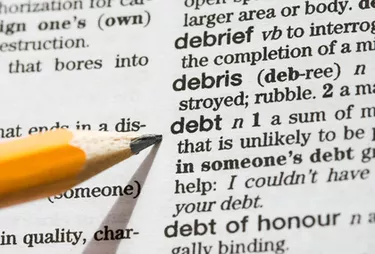
A debt instrument is a contract between a lender, a party loaning money, and a borrower, a party borrowing money. The debt instrument enables the lender to loan funds to the borrower, who promises to repay the loan. Common types of debt instruments include mortgages, loans, bonds, leases and notes.
Bond
Video of the Day
A bond, also sometimes called a fixed-income security, is a type of debt instrument that memorializes a loan made by an investor to a corporate or government entity. The loan is to be paid back over a period of time with a fixed interest rate and is often secured to fund projects.
Video of the Day
Loan
A loan is a debt instrument where one party, the lender, gives another party, the borrower, money, property, assets or materials goods on the basis of a promise by the borrower that the loan will be repaid with interest and finance charges. Loans may be an open-ended credit line with a limit, such as with credit cards, or they may be a specific one-time loan, such as a loan to buy a car. For larger loans, lenders may require that the loan be secured by collateral property.
Mortgage
A mortgage is a secured lien or loan on residential property. The loan is secured by the associated property. More specifically, if the borrower fails to pay, the lender can take the property to fulfill the outstanding debt.
Lease
A lease is an agreement between an owner of property and a tenant or renter. A lease is a type of loan instrument because it secures a regular rent payment from the tenant to the owner, thereby creating a secured long-term debt.